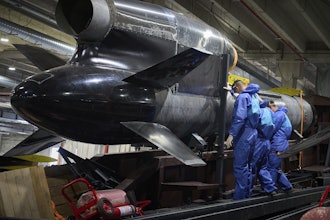Editor's note: This is the first installment of the Orkin Seasonal Pest Control Series. Orkin experts will provide Food Manufacturing readers with information and best practices for protecting food facilities from pests during each season of 2015.
Landscaping can be more than aesthetically pleasing. It can also serve as a huge attractant and provide harborage for pests.
During the early spring, pests emerge from overwintering and begin actively looking for sources of food, water and shelter they need to survive. Their search may bring them to your facility, and certain aspects of your landscaping plan could be providing an open invitation for them to come inside.
Fortunately, a landscaping plan designed with pest management in mind can also work against their efforts.
Landscaping can play a major role in your pest management program — and there are steps you can take to help keep the fight against pests like ants, flies, cockroaches and rodents outside. These practices are part of a broader Integrated Pest Management (IPM) program, which focuses on proactive exclusion tactics, facility maintenance and sanitation throughout your campus to help keep pest infestations from popping up.
IPM programs are perfect for food processing facilities because they are customizable; also, they do not rely solely on chemical treatments — chemicals are only used as a last resort, and then only in highly targeted treatments.
Talk with a pest management professional about implementing an IPM program at your facility, and use these practices in your landscaping plans to help limit entry points and cover for pests.
Flowers are a beacon for pests
Just like the azaleas at Augusta National Golf Club for The Masters, flowers tend to grow into full bloom this time of year. As a result, it could be tempting to plant them in every flower bed you can.
But these beautiful buds can welcome flying pests as well. Fragrant and brightly colored flowers in bloom can attract bees and other stinging pests, so consider planting fewer of these to help decrease pests on your property.
You can work with your pest management provider, who can help you choose plants and bushes that are less conducive to pest activity.
A moat around your castle
Crawling pests are opportunists. An unkempt bush or tree limb that brushes up against your facility may look innocent enough, but crawling pests can use these as a bridge to get on – and then inside – your building.
A little buffer can make a big difference. Trim back vegetation at least two feet from your building, creating an effective moat around your castle. Instead of mulch, which can harbor pests, consider installing a 2-foot gravel strip around the perimeter of your facility. The uneven surface of this strip obstructs pests like ants and cockroaches from approaching and also discourages rodents, which do not like to be out in the open.
Parking lots and sidewalks play a factor, too
You may not think of parking lots and sidewalks when thinking about landscaping, but they play an important role. Trash or standing water that can build up in parking lots can attract pests and give them an appetizer — and more reason to venture into your facility for a full meal.
Regularly inspect your parking lots and sidewalks to ensure they are clean of any trash or standing water, and keep an eye on vegetation islands that you may have in your parking lots, as they are often home to pests and should be inspected regularly.
While you are inspecting the exterior and periphery of your facility, take a look at your dumpsters as well. Make sure they are placed away from your building, cleaned and rotated on a regular basis.
Fortify your facility
Landscaping plans aren’t the only tasks to revisit in the beginning of spring. Now is also a perfect time to inspect the exterior of your building to see if the cold winter has had any negative effects.
Keep an eye out for any cracks that may have developed in your building’s windows, rooflines and exterior walls, as pests don’t need much of a gap to enter especially those close to the landscape plantings. The larger plants can also be trimmed so as not create harborage for pests, especially rodents. Rodents can squeeze through openings the size of a quarter, while mice can squash their way through openings the size of a dime. Cockroaches, ants and other crawling insects only need an opening of a fraction of an inch.
Seal any cracks or openings with a weather-resistant sealant and mesh to stop insects and rodents from sneaking through. Install weather stripping around doors and windows and change the stripping regularly to close any gaps that may develop. This will create an added buffer that will help keep ants out of your facility.
Try focusing on these areas and the landscaping around your facility. By getting an upper hand on your pest management program this spring, you can help fight off pests all year long.
About the author
Dr. Zia Siddiqi is Director of Quality Systems for Orkin. A board certified entomologist with more than 30 years in the industry, Dr. Siddiqi is an acknowledged leader in the field of pest management. For more information, e-mail [email protected] or visit www.orkincommercial.com.





















